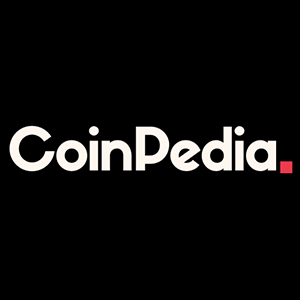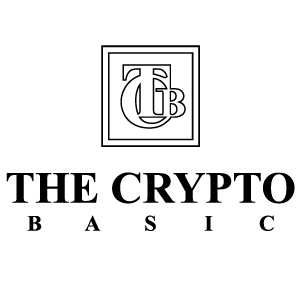

Polygon 2.0: MATIC Tokenomic Update
Summary Polygon Labs, the developer behind Polygon blockchains, is planning a significant update known as "Polygon 2.0." As part of this update, Polygon Labs will introduce a new token, "POL," which will replace the current MATIC token on a 1 to 1 basis. This change is expected to dramatically shift the economic purpose of Polygon's native token, potentially impacting its utility. Those who have followed my work on Seeking Alpha may recall Polygon ( MATIC-USD ) was my top crypto bull pick for 2023 back in December . It's a coin that I've covered a handful of times and is one of the larger positions in my cryptocurrency portfolio. To briefly summarize what I've liked about Polygon's MATIC token: Supply capped coin, of which 93% is already circulating It has historically been used to pay transaction fees on what I believe to be the leading Ethereum ( ETH-USD ) scaling network The blockchain has onboarded non-crypto native users through products like Reddit Avatars and Starbuck ( SBUX ) Odyssey Throughout much of June and July, Polygon Labs, the core developer behind the Polygon blockchains, has been rolling out plans for what the team has dubbed "Polygon 2.0." In my last article covering Polygon in late-June, I focused on Polygon Labs' plan to transition the network's main chain to a zkEVM Validium blockchain. At that time, what we didn't know was the impact this move might have on the utility of Polygon's MATIC token. However, this announcement came just a few months after Polygon Labs launched a separate zkEVM that doesn't utilize MATIC as the gas fee token of the chain. We now know much more about how MATIC fits in the Polygon 2.0 transition, and I don't believe it's a stretch to say there will be a significant shift in the economic model of Polygon's native token. MATIC Deprecation, POL is Born On July 13th, Polygon Labs announced it will be implementing a new token as part of the planned Polygon 2.0 relaunch. This new token, which will carry the ticker symbol "POL," will replace MATIC on a 1 to 1 basis according to Polygon Labs. Holders of the current MATIC token will essentially deposit their MATIC tokens into a smart contract and then receive the POL token in return. Because this does require action at the individual user level on-chain, the window for POL redemption will be 4 years or longer, according to Polygon Labs. With the proposed end of MATIC and start of POL, we also get an update to the token economics of the new POL coin. In the table below, I've laid out some of the relevant changes for the new native Polygon coin: MATIC POL Token Supply 10 Billion Capped 10 Billion, 2% Annual Emission Gas Fee Utility Yes on PoS Chain Yes on PoS Chain, No on zkEVM/supernets Source: Polygon Labs With the launch of POL, the 10 billion native token supply cap will be over. The 2% annual emission rate is split 50/50 between validator rewards and a newly proposed Polygon "Community Treasury." In the POL white paper that accompanied the Polygon Labs blog post, the authors went into detail about why they feel the change to supply cap is necessary going forward: The rationale for the proposed emission and the emission rates is that the Polygon ecosystem and Web3 in general will need time to mature and reach mainstream adoption. Based on the historical Internet and computing platforms adoption cycles, the maturity phase could be realistically expected to happen in about 10-15 years. During that period, the ecosystem will need economic support. The Polygon founders appear to concede that transaction fees alone won't be able to make validation economically viable for several years. This is not unusual for public blockchain networks, but it is interesting nonetheless. They went on to mention that a 2% rate of inflation is roughly inline with what Bitcoin ( BTC-USD ) has currently through block reward coin issuance - though that number is programmed to decline to nothing in a century. The authors then hypothesize a future where the community votes to either reduce or eliminate ongoing emissions when the network is mature enough to sustain itself without new supply distributions. Importantly, the white paper notes that community voters cannot decide to increase the emission rate. Gas & Future Utility As I pointed out in March, MATIC/POL will not be used as the gas payment coin for the newly launched Polygon zkEVM. However, according to the FAQ section from the POL tokenomic announcement, the proof-of-stake chain will continue to use POL as its gas payment currency going forward. This is a good sign for the token's utility on the legacy chain. However, what remains unclear is where the incremental growth in the Polygon ecosystem will be. Polygon previously announced the development of "supernets," or customizable 2nd layer chains, built within the Polygon ecosystem. If the growth in the Polygon ecosystem happens off of the PoS chain and instead takes place on the new zkEVM or the upcoming supernets, POL's utility as a gas payment token will be diminished. That's because there is no guarantee POL will be used as the gas token on any of the proposed Polygon supernets. Supernet developers have the ability to manage their own native tokens and use those for transaction payment rather than POL. There is an incentive for supernet developers to use their own token for payments because doing so allows them to control transaction costs at a fixed rate or abstract them away from the end user all together by paying the fees for them. This seems to be what Polygon Labs is expecting: 10 Year Growth Model (POL White Paper) In the POL white paper, the authors modeled the ten-year growth potential for both public chains and supernets within the ecosystem. They noted different levels of interest for each currently: Additionally, it is noticeable that the trend of interest in Supernets is stronger in relative terms than the one for public chains. Assuming they are correct, my read on this is POL will end up used less for transaction payment and more for staking and validation rewards. This is where the developers are assuming the value proposition from staking and validation will counteract the potential loss of gas payment utility, particularly on the supernets. Given the customization options of the supernets, one of the theoretical justifications for holding POL is for the ability to validate multiple chains while generating rewards from each individual chain. This gives chain operators the ability to pay validators essentially however they wish; whether that be in their own chain's native token or something else. This would be a tertiary reward on top of the programmed emission from validation and the transaction fees from the main chain. Risks One of the questions in the FAQ is whether this is a response to recent developments in the regulatory environment. It wasn't explicitly mentioned, but one can realistically assume the team is referring to the SEC's recent designation of MATIC as an unregistered security. Polygon Labs denies that this is a response to that, and claims work on this proposal began a year ago. But I will say optically it's interesting timing that MATIC is now going away roughly a month after the SEC labeled it a security. I'll allow readers to make their own judgement on that. Investor Takeaways Developing a cryptocurrency portfolio is far from straightforward. Since I started personally buying and covering these assets for Seeking Alpha, my goal has been to allocate to tokens and ideas that I personally believe have a fundamental value through utility. To me, MATIC's utility on the PoS chain was obvious. I'm much less convinced about POL going forward. That said, I don't necessarily see selling MATIC today to be the proper course of action. In my view, the price can still head much higher from here. But this is no longer a coin that I can confidently say I expect to outperform BTC or ETH going forward. Pure staking coins and governance tokens are much less interesting to me than utility coins. Bitcoin is necessary for transaction payments. Ethereum is necessary for transaction payments. When the utility for a coin becomes a bit more obfuscated, as I believe to be the case for POL longer term, coin performance can tend to become more about "number go up" than about organic demand. For MATIC, the demand currently comes from a necessity to participate at the user level. For POL, that necessity to participate may skew away from the user and more to the validator level only. We don't know for sure yet. It's going to come down to where the growth is in the Polygon ecosystem.









